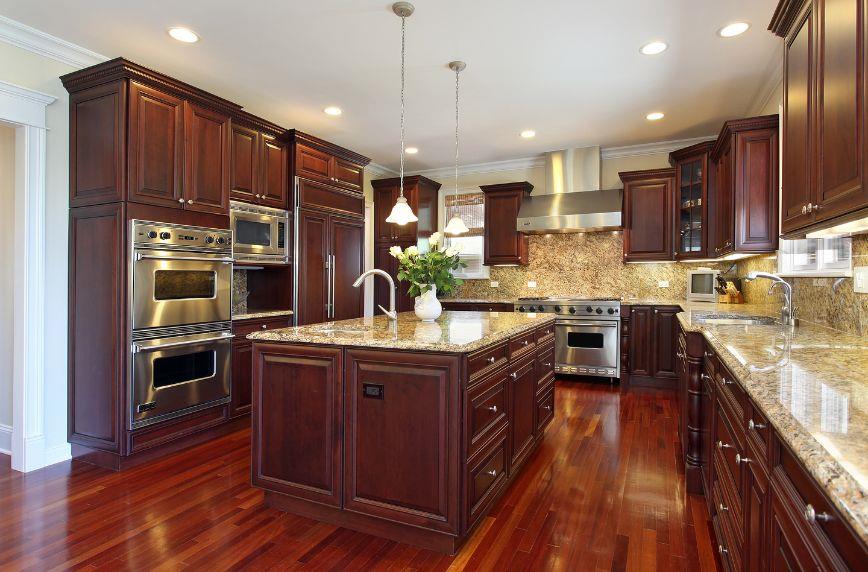With so many options available for kitchen surface materials, making the right choice can feel overwhelming. When exploring material options for your kitchen, consider materials like concrete, wood, quartz, natural stone, and stainless steel.
Natural vs. Engineered Materials for Kitchens
Natural materials are those that come from nature in their raw state, such as wood and stone. Engineered materials are those created by mixing natural elements with various binders or resins. Manufacturers can also make them by combining different types of metal and forming the resulting alloy into sheets or shapes. Examples include concrete, quartz, solid surface (a synthetic combination of minerals, resins, and coloring), and stainless steel.
Kitchen Surfaces
Floors, plumbing fixtures, lighting, countertops, and cabinets can all contain a wide array of materials in different colors and finishes, each having distinct characteristics. Here are a few different types of surfaces to consider for different uses.
Concrete or Quartz Countertops
There are a few things to consider regarding concrete countertops, such as their durability, customization options, and industrial look. They’re available in a wide variety of colors, and you can customize them to fit your kitchen’s unique layout. You can even mix in decorative elements, like sea glass, pebbles, or colorful crystals, to give the surface a unique appeal.
However, concrete countertops, like many other types of surfaces, require periodic resealing to protect them from stains. Although newer concrete formulations are lighter, concrete is still heavy, so additional floor support might be necessary.
Quartz countertops contain a mixture of ground quartz, resin, and pigment. They are relatively low maintenance, durable, and nonporous, so they resist stains and don’t require sealing, but they can chip and become scratched. They’re not heat resistant, so putting a hot pot or dish on them can damage them.
Wood Cabinets
The warm, natural, timeless appearance of wood is always welcome in a kitchen. You can stain or paint wood in a wide variety of shades and colors to highlight its natural grain or to coordinate and complement backsplashes, floors, and walls.
Wood cabinetry and countertops require regular maintenance and can be susceptible to water damage, scratches, scorching, and cuts. Because of this, you must sand and reseal them regularly.
Stainless Steel Appliances and Countertops
Stainless steel blends well with a variety of kitchen styles and gives a sleek, professional appearance. This material is easy to clean with a product specially formulated to polish stainless steel, and it’s heat resistant, which makes it suitable for items straight from the oven. However, stainless steel will show fingerprints, water stains, and smudges, and it’s prone to scratches that you can’t easily repair.
Stone Floors
Natural stone, such as limestone and slate, looks beautiful for floors. Lovely as it is, though, natural stone requires careful, gentle cleaning, can stain and chip, and can be slippery when wet.
Cost and Maintenance Considerations
When exploring material options for your kitchen remodel, consider the initial costs and long-term maintenance expenses. Different materials will require varied levels of care, so factor this in when making your decision.
Are You a Professional?
Requests for your services are coming in left and right. Let’s connect and grow your business, together.


